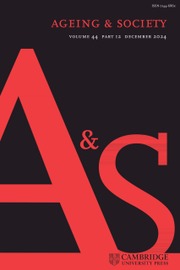No CrossRef data available.
Article contents
Does digital inclusion lead to different perceptions of well-being among the middle-aged and the young-old?
Published online by Cambridge University Press: 19 November 2025
Abstract
Despite growing attention being paid to digital inclusion and its impact on individual well-being, empirical research focusing specifically on middle-aged adults and young-old adults remains limited, particularly in China. This study examines the association between digital inclusion and subjective well-being among middle-aged adults (aged 45–59) and young-old adults (aged 60–69) in China, utilizing data from the 2019 and 2021 waves of Chinese Social Survey (CSS). The analysis begins with descriptive statistics that outline the current status of digital inclusion and subjective well-being among these groups, followed by regression models that assess the impact of digital inclusion and investigate possible moderating factors. The results indicate that digital inclusion significantly enhances subjective well-being for both middle-aged and young-old adults, with all four dimensions of digital inclusion showing positive associations with well-being. Among these, digital learning inclusion exerts the strongest effect. However, factors such as socio-economic status, social connection and political participation do not fully account for this relationship, and, notably, social connection may even diminish the positive effects of digital inclusion on well-being. This study offers a new perspective on the impact of digital inclusion on the subjective well-being of middle-aged and young-old adults, and provides a direction for further research in this field.
Information
- Type
- Article
- Information
- Copyright
- © The Author(s), 2025. Published by Cambridge University Press.

